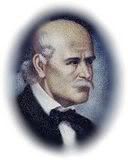Semmelweis: ID hero
 You may or may not be familiar with the name Ignaz Semmelweis. It’s not one that’s typically taught to school children, like Koch or Pasteur may be. He even tends to get glossed over in upper-level biology courses. But Semmelweis was an important figure in the history of microbiology (indeed, I picked his work as the greatest experiment in my field). Here’s what I wrote about him in that post:
You may or may not be familiar with the name Ignaz Semmelweis. It’s not one that’s typically taught to school children, like Koch or Pasteur may be. He even tends to get glossed over in upper-level biology courses. But Semmelweis was an important figure in the history of microbiology (indeed, I picked his work as the greatest experiment in my field). Here’s what I wrote about him in that post:
Semmelweis was a physician in Vienna in the 1840s, with an interested in “childbed fever,” a leading cause of mortality in women who’d given birth. During this time, he noticed that the mortality rate from this disease in a hospital division where medical students delivered babies was 16%, while in a division where midwives delivered them was ~2%. It was also known that childbed fever was rare when women gave birth at home. Semmelweis thought there was something the med students were doing that served to raise the rates of childbed fever in those divisions.
In 1847, Semmelweis’ friend, another physician, died due to a wound acquired while performing an autopsy. Semmelweis examined the tissues of his friend, and noticed the pathology there was similar to those in women who’d died of childbed fever. According to history, this led to his “eureka” moment: medical students performed autopsies, and midwives did not. The students must be bringing some contagious agent from the autopsy room back to the delivery room.
To test this, Semmelweis instituted a procedure, requiring students to wash their hands in a chlorine solution before entering the maternity ward. Mortality dropped dramatically, and Semmelweis extended the procedure to include surgical instruments as well. However, colleagues scoffed. Semmelweis actually lost his job, and took a position in Budapest–where he again instituted his handwashing protocol, with similar incredible results. Sadly, he died in 1865 in an asylum, disgraced.
Of course, many of you realilze that IDers love to tell the stories of scientists who were persecuted and scorned when they first proposed their idea, only to have history vindicate them. They compare their own ID supporters to Galileo, Barry Marshall, and other noted scientists (and, of course, Dembski’s been called the “Isaac Newton of information theory,”) and like to pretend that, like these esteemed scientists, history will give them the last laugh. Well, it seems that Semmelweis also has become something of an iconic figure to some who support “intelligent design.” Find out more about it at Aetiology.
